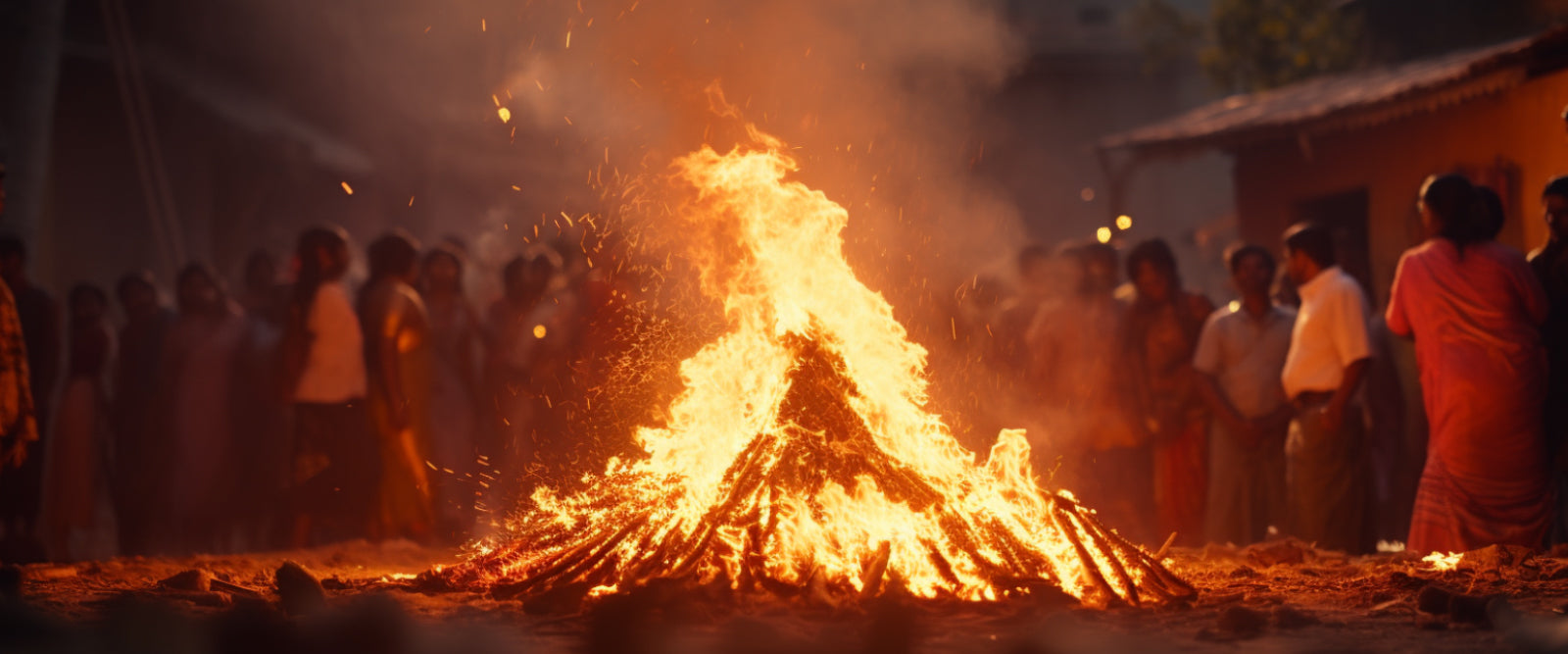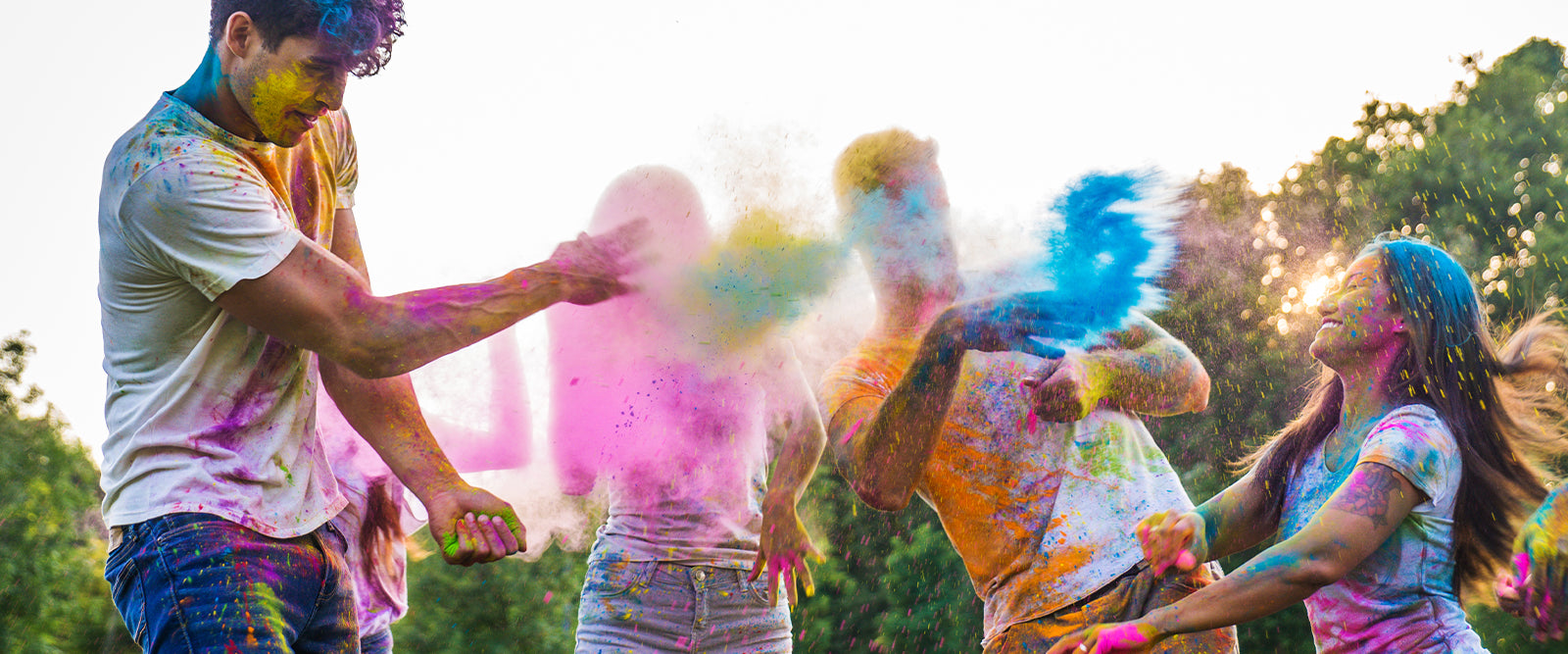
Why Is Holi Celebrated: Discover The Captivating Story Behind It!
Hooray! March is here, and the vibrant hues of Holi are just around the corner! This festival of colours isn't just about the joyous throws of powder paint and playful water fights. It carries within it a rich tapestry of history, mythology, and cultural significance. Whether you're eager to relive stories whispered by your grandparents, connect with the fascinating history of holi festival, or simply curious about why holi is celebrated in India, this blog is your gateway to the captivating story behind Holi!
The Rich History Of History Festival
Holi's vibrant celebrations can trace their roots back to a remarkable journey through time. Evidence suggests the festival's origins lie in the 4th century BC, making it a centuries-old tradition steeped in history. Over the years, Holi has evolved and adapted, absorbing diverse regional customs and integrating them into its vibrant tapestry. These regional influences have contributed to the unique variations seen across India, each with its own special flavour.
However, Holi transcends its regional diversity and holds a significant position within the Hindu faith. Holi celebration is associated with religious narratives that carry deep meaning and symbolism, offering a deeper layer of understanding to the festival's significance.
What Is The Story Behind Holi? Know Now!
Holi, India's vibrant "Festival of Colors," is a joyous celebration that transcends its colourful facade. It holds within its heart a captivating story, woven from two significant narratives that explain why Holi is celebrated. Let's explore these tales and delve deeper into the heart of this holi celebration.
The Triumph of Good: Holika and Prahlad
The legend of Holika and Prahlad is a central narrative associated with Holi celebrations in India. King Hiranyakashyap, Prahlad's father, was granted a boon that made him nearly invincible. Blinded by his power and ego, he demanded to be worshipped as the sole god, even forbidding the worship of Vishnu, the preserver god in Hinduism.
However, Prahlad, a staunch devotee of Vishnu, refused to obey his father's decree. This enraged Hiranyakashyap, who devised numerous plans to eliminate his son. One such attempt involved his sister, Holika, who possessed a magical shawl that made her immune to fire. Prahlad was tricked into sitting on a pyre with Holika, while she donned the protective shawl. However, in a dramatic turn of events, the shawl flew onto Prahlad, shielding him from the flames, while Holika perished. This event signifies the triumph of good over evil, reminding us that righteousness and devotion always prevail.
The Eternal Bond: Radha and Krishna
Another significant story associated with the Holi festival in India is the playful tale of Radha and Krishna. This narrative is particularly celebrated in the Braj region of India, where these deities are revered. The legend tells the story of Krishna, who was known for his dark blue complexion, and Radha, with her fair skin. Krishna, feeling insecure about his skin tone, playfully smeared colours all over Radha's face, symbolising the playful nature of their love and the beauty of acceptance. This story highlights the significance of divine love and the playful spirit associated with Holi.
These two stories, along with other regional narratives, add depth and meaning to Holi celebrations. They remind us of the importance of good overcoming evil, the power of unwavering devotion, and the beauty of love and acceptance. As you witness the vibrant colours of Holi, remember the captivating story behind them, enriching your experience of this joyous festival.
Why Holi Is Celebrated In India?
In India, Holi is a multifaceted celebration that transcends religious boundaries and holds significance on various levels. Let's explore the key reasons why is holi celebrated in India:
-
Victory of Good Over Evil: As we saw in the legend of Holika and Prahlad, Holi celebrates the triumph of good over evil. It serves as a reminder to stand firm in your beliefs and that righteousness ultimately prevails.
-
Arrival of Spring: Holi coincides with the end of winter and the beginning of spring. The vibrant colours symbolise the blossoming of nature and the fertility of the land, marking a fresh start and a hopeful new season.
-
Thanksgiving for a Good Harvest: Traditionally, Holi was a time to express gratitude for a bountiful harvest. The vibrant colours and joyous spirit represent the blessings of a successful agricultural season.
-
Celebration of Divine Love:: The story of Radha and Krishna adds a layer of love and devotion to the festival. Holi becomes a celebration of their playful love, reminding us of the beauty of acceptance and the strength of divine bonds.
-
Community Bonding and Social Harmony: During Holi, social barriers dissolve as people of all ages, backgrounds, and religions come together to celebrate. The playful throwing of colours fosters a sense of camaraderie and strengthens community spirit.
-
Letting Go and Renewal: Holi provides a space for letting go of inhibitions and past grievances. The act of throwing colours can be seen as a symbolic washing away of negativity, paving the way for renewal and fresh beginnings.
-
Celebrating Life's Joys: Ultimately, Holi is a vibrant celebration of life itself. The colours represent the joy, energy, and diversity present in the world. It's a time to embrace the beauty of life, connect with loved ones, and create lasting memories.
These are just some of the reasons why Holi holds such a special place in Indian hearts.
Embrace The Rich History And Celebrate Holi With Joy
Are you captivated by the rich history of the Holi festival? Hopefully, you are! It's time to delve into the vibrant celebration of Holi, where colours play a pivotal role. If you're curious about why we celebrate Holi with colours, let's explore the significance of colour in holi together!
This year, elevate your Holi celebration with the vibrancy of Jhilmil colours. It's not just about adding colour; it's about embracing tradition and safety. Jhilmil colours are crafted with natural ingredients, carrying the cultural and historical roots of Holi. We provide one of the best and safest ways to celebrate this festive occasion!
So, why wait? Celebrate holi with joy!
Happy Holi!
Frequently Asked Questions On Why We Celebrate Holi
1. What is the story behind Holi?
Ans: Holi, also known as the Festival of Colors, has its roots in Hindu mythology. One of the most popular stories associated with Holi is the legend of Holika and Prahlad. Prahlad, a devotee of Lord Vishnu, was the son of demon king Hiranyakashipu. Hiranyakashipu wanted everyone to worship him but Prahlad refused and continued to worship Vishnu. Angered by this, Hiranyakashipu asked his sister Holika, who was immune to fire, to sit on a pyre with Prahlad on her lap. However, due to Prahlad's devotion to Vishnu, he remained unharmed while Holika perished in the fire. This victory of good over evil is celebrated as Holi.
2. Why Holi is played with colors?
Ans: The tradition of playing with colours during Holi is linked to another story from Hindu mythology, the story of Lord Krishna. According to legend, as a young boy, Krishna was envious of Radha's fair complexion. His mother, Yashoda, jokingly suggested that he could colour Radha's face with any colour he wanted. In a playful spirit, Krishna applied colours to Radha's face, and the tradition of playing with colours during Holi was born. This act of Krishna is commemorated during the festival, symbolising the playful and joyous spirit of Holi.
3. Why do we throw colours on Holi?
Ans: Throwing colours during Holi symbolises the breaking down of social barriers and the celebration of unity and brotherhood. It is believed that during Holi, people forget their differences and come together to celebrate the joyous occasion. The act of throwing colours on each other signifies the shedding of inhibitions and embracing each other with love and warmth. Additionally, the vibrant colours used during Holi are said to represent the arrival of spring and the colourful nature of life. Overall, throwing colours on Holi is a way to spread happiness, love, and togetherness among people.


